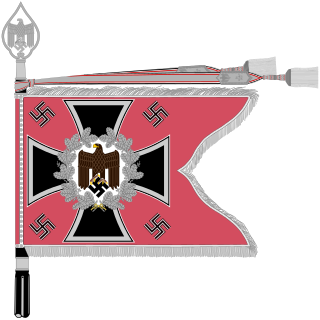This article has multiple issues. Please help improve it or discuss these issues on the talk page . (Learn how and when to remove these template messages) (Learn how and when to remove this template message)
|
| Panzer division (1939) | |
|---|---|
| Panzerdivision (1939) — PzDiv — XX | |
| Active | 1939–1945 |
| Country | |
| Branch | German Heer |
| Type | Panzer |
| Role | Armoured warfare |
| Size | 11,792 personnel (1939)
|
| Part of | |
| Engagements | World War II |
A panzer division is one of the armored (tank) divisions in the Wehrmacht of Nazi Germany during World War II. This is a more restricted meaning than the German-language equivalent Panzerdivision (short: PzDiv), still used in the modern German Army of the Bundeswehr (for example the 1. Panzerdivision). In German-speaking countries, Panzerdivision is not immediately associated with the Wehrmacht as it is in English, as the German term simply means "armored division" and has no additional connotation.
Contents
- Pre-war development
- World War II
- Heer
- Tank complement
- Flags
- See also
- References
- Sources
- External links
Panzer divisions were the key element of German success in the blitzkrieg operations of the early years of World War II. Later the Waffen-SS formed its own panzer divisions, and even the Luftwaffe fielded a panzer division: the Hermann Göring Division.
A panzer division was a combined arms formation, having both tanks (German Panzerkampfwagen, 'armored fighting vehicle', usually shortened to "Panzer"), mechanized and motorized infantry, along with artillery, anti-aircraft and other integrated support elements. At the start of the war, panzer divisions were more effective than the equivalent Allied armored divisions due to their combined arms doctrine, even though they had fewer and generally less technically-advanced tanks. [1] By mid-war, though German tanks had often become technically superior to Allied tanks, Allied armored warfare and combined arms doctrines generally caught up with the Germans, and shortages reduced the combat readiness of panzer divisions. The proportions of the components of panzer divisions changed over time.
The World War II German equivalent of a mechanized infantry division is Panzergrenadierdivision ('armored infantry division'). This is similar to a panzer division, but with a higher proportion of infantry and assault guns and fewer tanks.










